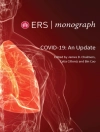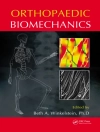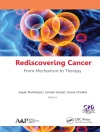The last of an ongoing series of Cardiostim monographs all devoted to cardiac pacing, was published four years ago. Since then, cardiac res- chronization for the treatment of heart failure has undergone spectacular progress and has revolutionized device therapy. Many patients have benefited from ventricular resynchronization often combined with an implantable cardioverter-defibrillator. More implantations are likely in the future as the indications continue to evolve with more attention being paid to the primary prevention of heart failure in selected patients and the treatment of earlier stages of left ventricular dysfunction. Thus, we felt it was time for the current Cardiostim monograph to focus exclusively on cardiac resynchronization so as to review the remarkable technologic and clinical advances in the field. We are grateful to the contributors who worked so hard to complete their manuscripts on time and their diligence in presenting new concepts and technical details in an easily understandable fashion. Working with the Springer publishers, especially Melissa Ramondetta, Executive Editor, Dianne Wuori, Editorial Assistant, and Candace Rosa, Production Editor, was a real pleasure. Their patience, courtesy and efficiency are very much appreciated.
Table of Content
Indications and Implantation for Cardiac Resynchronization Therapy.- Do the Official Guidelines for Cardiac Resynchronization Therapy Need to Be Changed?.- Alternative Techniques for Left Ventricular Lead Placement.- Importance of the Right Ventricular Pacing Site in Cardiac Resynchronization.- Alternative Means of Achieving Cardiac Resynchronization.- CRT-Pacing Only Versus CRT-Defibrillator.- Upgrading Conventional Pacemakers to CRT: Indications and Technical Considerations.- Cardiac Resynchronization for Heart Failure.- Update of Cardiac Resynchronization Trials.- Cardiac Resynchronization for Heart Failure: Do We Need More Trials?.- Should Cardiac Resynchronization Be Considered for the Prevention of Heart Failure?.- Left Bundle Branch Block–Induced Cardiomyopathy: A New Concept of Mechanically Induced Cardiomyopathy.- Role of Echocardiography Before CRT Implantation: Can We Predict Nonresponders?.- Role of Echocardiography After Implantation of a Cardiac Resynchronization System.- Advances in Technology.- Recent Advances in the Technology of Cardiac Resynchronization Therapy.- Advances in Left Ventricular Pacing Leads.- New Pacing Algorithms and Functions in CRT Devices.- Significance of Latency During Left Ventricular Pacing for Cardiac Resynchronization Therapy.- Programmability of the Interventricular Interval During Cardiac Resynchronization Therapy.- Hemodynamic Sensors in Heart Failure Devices.- Assessment of Single-Shock Defibrillation Testing of Biventricular ICDs.- Follow-up.- How to Program CRT Devices.- Programming and Follow-up of CRT and CRTD Devices.- The Standard Electrocardiogram During Cardiac Resynchronization.- Cardiac Arrhythmias After Cardiac Resynchronization.- Advances in CRT Device Diagnostics.- Complex Issues in the Follow-up of CRTDevices.- Recurrent Heart Failure and Appropriate Evaluation After Cardiac Resynchronization Therapy.












